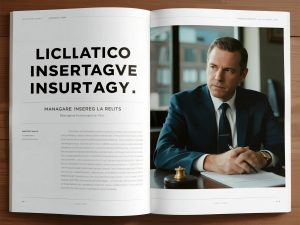Comprehensive Executive Disability Insurance Protection for Business Leadership The strategic implementation of executive disability insurance represents a critical component of modern corporate risk management, providing essential financial protection for organizations that depend on the specialized skills, leadership capabilities, and business relationships of key executives and senior management personnel. These sophisticated insurance solutions address the substantial financial risks associated with the potential disability of critical business leaders, ensuring organizational stability, business continuity, and financial protection against the significant economic
consequences that can arise when key personnel become unable to perform their essential functions due to injury, illness, or medical conditions. The fundamental importance of executive disability coverage lies in its ability to transfer substantial financial risks from the organization to insurance carriers, allowing companies to maintain operational stability, protect shareholder value, and preserve business relationships while addressing the complex challenges associated with executive disability scenarios. Businesses operating in competitive markets recognize that comprehensive executive protection requires a multi-layered approach combining appropriate insurance coverage, succession planning strategies, and risk management frameworks that collectively address the full spectrum of risks associated with key personnel dependencies. The insurance industry has developed specialized executive disability products that provide both income replacement benefits for disabled executives and business protection coverage for organizations facing financial losses resulting from executive disabilities affecting operational performance, strategic direction, and business development activities. The continuous innovation in executive disability insurance reflects the evolving nature of business leadership risks and the insurance market’s commitment to providing effective risk transfer solutions for organizations navigating the complexities of executive dependency and leadership continuity challenges.The effective implementation of executive disability insurance strategies involves careful evaluation of organizational leadership structures, executive contribution levels, and coverage requirements that align with specific business operations, industry characteristics, and risk tolerance parameters. These insurance solutions typically feature specialized coverage components addressing executive income replacement, business interruption losses, executive recruitment costs, and leadership transition expenses that standard disability insurance policies may not adequately cover or explicitly exclude from protection. The underwriting process for executive disability insurance involves detailed assessment of executive health conditions, occupational responsibilities, contribution levels, and replacement challenges
that influence both coverage availability and premium calculations within the specialized executive insurance market. The claims handling expertise ensures that when executive disability events occur, policyholders receive appropriate support from specialized claims professionals who understand the business implications, financial consequences, and operational challenges associated with executive disabilities affecting organizational performance and strategic direction. The risk management services offered by executive disability insurance providers include access to executive health specialists, leadership transition consultants, and business continuity experts who help organizations prevent executive disability scenarios, respond effectively when they occur, and recover completely following executive disability events. The premium structures for executive disability coverage reflect the specialized nature of protection, with pricing considerations including executive compensation levels, organizational revenue, industry sector characteristics, and historical loss experience that collectively determine appropriate premium levels for comprehensive executive protection. The relationship-based approach to executive disability insurance ensures continuous coverage review and adjustment as business leadership evolves, executive responsibilities change, and organizational risk profiles develop, maintaining appropriate protection alignment over time. The peace of mind provided by comprehensive executive disability coverage allows corporate boards and business owners to focus on strategic growth initiatives without excessive concern about potential executive disability scenarios that could otherwise threaten organizational stability, financial performance, and competitive positioning in dynamic business environments.High-Value Life Insurance Integration with Executive Protection Strategies
Sophisticated high-value life insurance USA solutions provide essential complementary protection for executive disability insurance programs, addressing the mortality risks associated with key personnel while creating comprehensive financial protection frameworks that cover both disability and death scenarios affecting business leadership continuity. These integrated insurance approaches understand that executive protection requires addressing multiple risk dimensions, including income replacement needs, business financial protection, and personal financial security considerations that collectively influence appropriate coverage structures and policy terms for key executives and senior management personnel. Organizations benefit from combining executive disability coverage with high-value life insurance solutions that provide coordinated protection against the various risks that could remove key executives from active business leadership, ensuring comprehensive financial protection regardless of whether disability or death scenarios affect executive availability and contribution capabilities. The fundamental advantage of integrated executive protection lies in its recognition that businesses face significant financial exposures from both disability and mortality risks affecting key personnel, requiring coordinated insurance strategies that address these complementary risk dimensions through appropriate coverage combinations and policy structures.
The strategic implementation of high-value life insurance USA alongside executive disability coverage involves careful assessment of executive financial needs, business protection requirements, and tax considerations that collectively determine appropriate coverage amounts, policy structures, and ownership arrangements for comprehensive executive protection programs. These integrated insurance solutions typically feature coordinated benefit structures that address executive income replacement needs, business financial protection requirements, and personal financial security considerations through appropriate policy combinations and coverage terms that reflect the complex interdependencies between executive protection and business continuity objectives. The specialized coverage integration addresses executive protection concerns such as buy-sell agreement funding, key person financial protection, executive family security, and business succession planning needs that might not be adequately addressed through standalone disability or life insurance approaches. The policy administration expertise ensures that integrated executive protection programs maintain appropriate coordination between disability and life insurance components, with consistent underwriting approaches, coordinated premium structures, and aligned claims handling procedures that facilitate comprehensive protection management. The risk management coordination includes guidance on executive health management, leadership development, succession planning, and business continuity strategies that help organizations reduce their executive dependency risks through proactive leadership development and risk mitigation practices. The premium coordination considerations reflect the integrated nature of executive protection, with pricing structures that account for the combined risk exposures, coverage benefits, and policy features that influence appropriate premium levels for comprehensive executive insurance programs. The continuous program management ensures that integrated executive protection remains aligned with evolving business leadership needs, executive compensation structures, and organizational risk profiles that affect executive protection requirements and appropriate coverage levels over time. The comprehensive protection provided by coordinated executive disability and high-value life insurance solutions allows organizations to maintain leadership stability, protect business value, and ensure financial security regardless of whether disability or mortality events affect key executives and their ability to contribute to organizational success and business performance objectives.
Strategic Key Person Insurance Policies for Business Continuity Protection
Comprehensive key person insurance policies provide essential financial protection for organizations facing the potential loss of critical personnel whose specialized skills, unique knowledge, or business relationships represent significant value drivers and competitive advantages within their respective markets and industry sectors. These specialized insurance solutions address the substantial financial risks associated with key personnel dependencies, ensuring business continuity, operational stability, and financial protection against the economic consequences that can arise when essential employees become unavailable due to disability, resignation, or other circumstances affecting their contribution capabilities. Businesses benefit from key person insurance policies specifically designed to address their unique personnel dependency risks, with coverage terms that understand the specific value propositions, replacement challenges, and financial impacts associated with losing critical personnel across various organizational functions and business areas. The fundamental importance of key person insurance lies in its ability to provide financial resources for recruitment, training, and business stabilization during periods of key personnel transition, helping organizations maintain operational performance, protect business relationships, and preserve competitive positioning while addressing the challenges associated with critical personnel changes and dependency risks.
The effective implementation of key person insurance policies involves careful identification of critical personnel, assessment of dependency risks, and evaluation of financial exposures that collectively determine appropriate coverage amounts, policy structures, and protection terms for comprehensive key person protection programs. These insurance solutions typically feature specialized coverage components addressing recruitment costs, training expenses, business interruption losses, and relationship transition challenges that standard business insurance policies may not adequately cover or explicitly exclude from protection scope. The specialized coverage approaches address industry-specific key person concerns such as technical expertise dependencies, client relationship concentrations, intellectual property knowledge, and operational experience factors that require tailored protection strategies based on particular business models and organizational characteristics. The claims management expertise ensures that when key person events occur, policyholders receive appropriate support from insurance professionals who understand the business implications, operational challenges, and financial consequences associated with losing critical personnel and their unique contribution capabilities. The risk assessment services include guidance on personnel dependency analysis, succession planning development, knowledge management practices, and talent development strategies that help organizations reduce their key person risks through proactive human resource management and organizational development practices. The premium calculation methodologies reflect the specialized nature of key person protection, with pricing considerations including personnel criticality levels, replacement difficulty factors, business impact assessments, and industry sector characteristics that influence appropriate premium levels for comprehensive key person insurance coverage. The continuous program evaluation ensures that key person protection remains aligned with evolving organizational structures, business strategies, and personnel dependencies that affect key person risk exposures and appropriate protection requirements over time. The comprehensive protection provided by strategic key person insurance policies allows organizations to manage their personnel dependency risks effectively, maintain business continuity during personnel transitions, and protect organizational value against the financial consequences of losing critical personnel whose specialized skills and knowledge represent essential components of business success and competitive advantage in dynamic market environments.

High Limit Disability Insurance Solutions for Executive Income Protection
Specialized high limit disability insurance solutions provide essential income replacement protection for executives and high-income professionals facing potential disability scenarios that could interrupt their earning capabilities and compromise their financial security, lifestyle maintenance, and family support responsibilities. These sophisticated insurance products address the substantial income protection needs of high-earning individuals, ensuring financial stability, lifestyle preservation, and personal security against the economic consequences that can arise when disabilities prevent executives from performing their occupational duties and generating their customary income levels. High-income professionals benefit from disability insurance solutions specifically designed for their elevated income protection requirements, with policy terms that understand the substantial financial commitments, lifestyle expectations, and family responsibilities that influence appropriate coverage levels and benefit structures for executive disability protection. The fundamental advantage of high limit disability insurance lies in its ability to replace significant income losses, maintain financial obligations, and preserve personal lifestyles during disability periods, helping executives and their families maintain financial security and quality of life while addressing the medical, personal, and financial challenges associated with disability scenarios.
The strategic implementation of high limit disability insurance coverage involves careful assessment of income levels, financial obligations, lifestyle requirements, and personal circumstances that collectively determine appropriate benefit amounts, elimination periods, and benefit durations for comprehensive executive income protection. These insurance solutions typically feature enhanced coverage components addressing specialized occupation definitions, own occupation protection, future increase options, and residual disability benefits that standard disability insurance policies may not adequately provide or may limit through restrictive policy provisions. The specialized coverage enhancements address executive-specific protection concerns such as bonus income replacement, equity compensation protection, retirement contribution maintenance, and professional expense coverage that require tailored insurance approaches based on particular compensation structures and financial planning objectives. The underwriting expertise ensures that high limit disability applications receive appropriate risk assessment considering executive health conditions, occupational characteristics, income verification, and financial circumstances that influence coverage availability and premium calculations within the high limit disability insurance market. The policy design services include guidance on benefit structure selection, rider options evaluation, tax considerations analysis, and integration strategies with employer-provided benefits that help executives optimize their disability protection through comprehensive coverage design and appropriate policy configuration. The premium structures reflect the high limit nature of coverage, with pricing considerations including age factors, occupation classifications, health conditions, and benefit amounts that influence appropriate premium levels for substantial income replacement protection. The continuous policy management ensures that high limit disability coverage remains aligned with evolving income levels, financial circumstances, and personal objectives that affect executive protection needs and appropriate benefit levels over time. The comprehensive income protection provided by strategic high limit disability insurance solutions allows executives to maintain financial security, preserve lifestyle standards, and protect family well-being during disability periods that could otherwise compromise their financial stability, personal objectives, and long-term financial planning outcomes in the absence of adequate income replacement protection.
Umbrella Insurance for Comprehensive Corporate Liability Protection
Strategic umbrella insurance for companies provides essential excess liability protection for organizations facing potential catastrophic loss scenarios that could exceed the coverage limits of primary liability insurance policies and threaten corporate assets, financial stability, and business continuity objectives. These sophisticated insurance solutions address the substantial liability exposures that modern businesses face in increasingly litigious environments, ensuring comprehensive financial protection against large judgments, substantial settlement amounts, and significant legal defense costs that could otherwise compromise organizational viability and shareholder value. Corporations benefit from umbrella insurance coverage specifically designed to complement their primary liability protection, with policy terms that understand the complex liability landscape, legal environment characteristics, and financial exposure parameters that influence appropriate excess coverage levels and protection structures for comprehensive corporate liability management. The fundamental importance of corporate umbrella insurance lies in its ability to provide additional liability protection layers, preserve corporate assets, and maintain financial stability when facing substantial liability claims that exceed primary insurance limits, helping organizations manage their liability risks effectively while protecting against catastrophic financial consequences from large loss scenarios.
The effective implementation of umbrella insurance for companies involves careful assessment of liability exposures, primary insurance limits, and financial protection needs that collectively determine appropriate umbrella coverage amounts, attachment points, and policy terms for comprehensive corporate liability protection programs. These insurance solutions typically feature broad coverage extensions addressing various liability exposures across different operational areas, business activities, and geographic locations that might not be adequately covered through primary insurance approaches or may require coordinated excess protection strategies. The specialized coverage integration addresses corporate-specific liability concerns such as directors and officers exposures, employment practices liabilities, product liability risks, and professional service exposures that require tailored umbrella protection approaches based on particular industry characteristics and business operation profiles. The risk assessment expertise ensures that corporate umbrella programs receive appropriate exposure evaluation considering operational activities, contractual obligations, regulatory requirements, and historical loss experience that influence coverage availability and premium calculations within the corporate excess liability insurance market. The policy coordination services include guidance on primary insurance requirements, retention level determinations, coverage gap analysis, and program structure optimization that help organizations design comprehensive liability protection frameworks through appropriate coordination between primary and excess insurance components. The premium structures reflect the excess nature of coverage, with pricing considerations including industry sector characteristics, revenue levels, loss history, and coverage limits that influence appropriate premium levels for substantial liability protection enhancement. The continuous program review ensures that corporate umbrella protection remains aligned with evolving liability exposures, legal environment changes, and business operation developments that affect liability risk profiles and appropriate protection levels over time. The comprehensive liability protection provided by strategic corporate umbrella insurance solutions allows organizations to manage their liability exposures effectively, protect corporate assets against large loss scenarios, and maintain financial stability when facing substantial liability claims that could otherwise threaten business continuity, corporate reputation, and organizational viability in challenging legal and business environments.
Integrated Executive Risk Management Framework for Comprehensive Protection
The strategic integration of various executive protection insurance solutions creates comprehensive risk management frameworks that address the multifaceted risks associated with key personnel dependencies, executive leadership continuity, and corporate financial stability across disability, mortality, and liability exposure dimensions. These coordinated insurance approaches understand that executive risk management requires addressing multiple protection needs through appropriate insurance product combinations, policy structure coordination, and coverage term alignment that collectively provide comprehensive financial protection against the various risks that could affect executive contribution capabilities and organizational performance outcomes. Businesses benefit from integrated executive protection frameworks that combine executive disability insurance with high-value life insurance USA solutions, key person insurance policies, high limit disability insurance protection, and umbrella insurance for companies coverage to create holistic risk management programs that address executive-specific risks through coordinated insurance strategies and comprehensive protection approaches. The fundamental advantage of integrated executive risk management lies in its ability to provide seamless protection across different risk scenarios, ensure consistent coverage terms, and facilitate comprehensive risk transfer solutions that address the complex interdependencies between executive protection needs and business continuity requirements within modern organizational structures and competitive market environments.
The implementation of effective integrated executive risk management involves careful coordination between different insurance components, assessment of coverage overlaps and gaps, and evaluation of program efficiency factors that collectively determine appropriate integration strategies, policy coordination approaches, and coverage optimization techniques for comprehensive executive protection programs. These integrated frameworks typically feature coordinated policy terms, aligned coverage structures, and consistent protection approaches that address executive risk management needs through appropriate insurance product combinations and coverage coordination strategies across different protection dimensions and risk exposure categories. The specialized integration services address executive-specific risk management concerns such as coverage coordination, policy administration, claims handling consistency, and program management efficiency that require expert guidance and professional support to ensure comprehensive protection implementation and appropriate risk management outcomes. The program management expertise ensures that integrated executive protection frameworks maintain appropriate coordination between different insurance components, with consistent underwriting approaches, coordinated premium structures, and aligned claims handling procedures that facilitate comprehensive protection management and efficient program administration. The risk assessment coordination includes guidance on executive risk identification, exposure quantification, protection prioritization, and program design optimization that help organizations develop comprehensive executive protection strategies through appropriate insurance product selection and coverage structure configuration. The premium optimization considerations reflect the integrated nature of executive protection, with pricing structures that account for coverage combinations, risk management benefits, and program efficiency factors that influence appropriate premium levels for comprehensive executive insurance programs. The continuous program evaluation ensures that integrated executive protection remains aligned with evolving business leadership needs, executive compensation structures, organizational risk profiles, and insurance market conditions that affect executive protection requirements and appropriate coverage approaches over time. The comprehensive protection provided by strategic integrated executive risk management frameworks allows organizations to maintain leadership stability, protect business value, ensure financial security, and manage executive dependency risks effectively through coordinated insurance strategies that address the complex challenges associated with executive protection and business continuity management in dynamic business environments and competitive market conditions.




